From nature walk to journal page
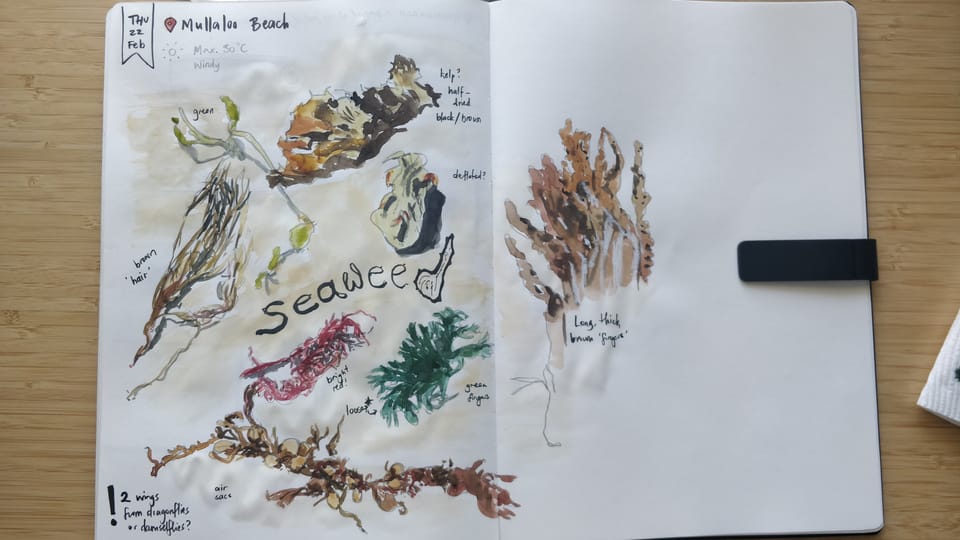
I've experimented lately with going on nature walks with the intention of journaling the experience ("properly") later. My aim is to enjoy the walk and only stop briefly, whereas when I go out to nature journal I usually intend to find something, or a spot, where I can stay for a while. They are two quite different scenarios and therefore (I believe) require separate approaches.
Let's explore some different ways you can go for a wander in nature, enjoy the surroundings, yet also transform the experience into a creative exercise and memorable record. In this article find out:
- what to take with you on a nature walk to create a record later
- what to do during the walk to maximise your enjoyment and as a source of inspiration for nature journaling
- how to convert that experience into a creative journal page
🥾On the walk
When you go on a nature walk what you take with you can range from nothing, to a whole backpack full of materials and tools. The focus here is on the walk, so keep the number of items you bring with you to a minimum. At most I would recommend the following, so its not too heavy to carry and you don't need to stop to take items out of a bag:
- a phone or small camera
- binoculars
- a small sketchbook and one or two writing tools
Next, consider what kind of walker are you? Listed below are different categories of nature walkers you might fit into. Hopefully you are always an observer, especially when going out with the intention of nature journaling. The other types build from that basis. For each kind of walker there are ideas for what to take and do on the walk:
👁 The observer
The observer just uses their senses to take in their surroundings while on a nature outing, not bringing any items other than themselves.
If you've stepped out unprepared, or just want to go for a walk with nothing to burden you, then you can still transform the walk into a creative nature journal page later. It all depends on what you notice (and remember). Here are some ideas for what to do as an observer:
- Let whatever catches your attention be your guide
- Cycle through all of your senses to maximise what you notice at any point in time
- Go for an 'awe walk' and purposefully seek out something that strikes a sense of awe in you
- Choose a colour and find things along your walk that match it
- Notice what's changed from last time you were here, or anything new
- Remark and remember any questions, special moments and discoveries - perhaps even saying it out loud as this can aid your memory
📸 The photographer
The photographer has a camera or phone with them to use as a memory aid and recording device, or even to enhance their vision.
Although journaling from life will give the most accurate, in-the-moment record, it is not always easy or possible to do so. Taking photos in order to journal from them later is very useful, however, try to avoid relying on photos as a crutch, or to let it take you away from being in the moment.
Photos are handy if you are short for time and wish to journal later when it's more suitable (e.g. due to poor weather). They are also great if you find you forget half of what you saw, or would like to record more detail - in other words when you don't want to rely on just memory. Ultimately though, you will lose some information from no longer being in direct contact with the moment.
- If you can remember, then aim to go for a variety of shots as this will add interest to your page. So go for the animal portraits or macro shots, but also take some photos 'zoomed out' from the scene or landscape, or 'zoomed in' to look at texture and details.
- Use video to record sounds, events or fast subjects
- Take multiple photos at different angles, sometimes one might not show everything or be a blur
- Contextual information or signs can be useful memory aids, so take photos of them too, and
- Remember to include yourself!
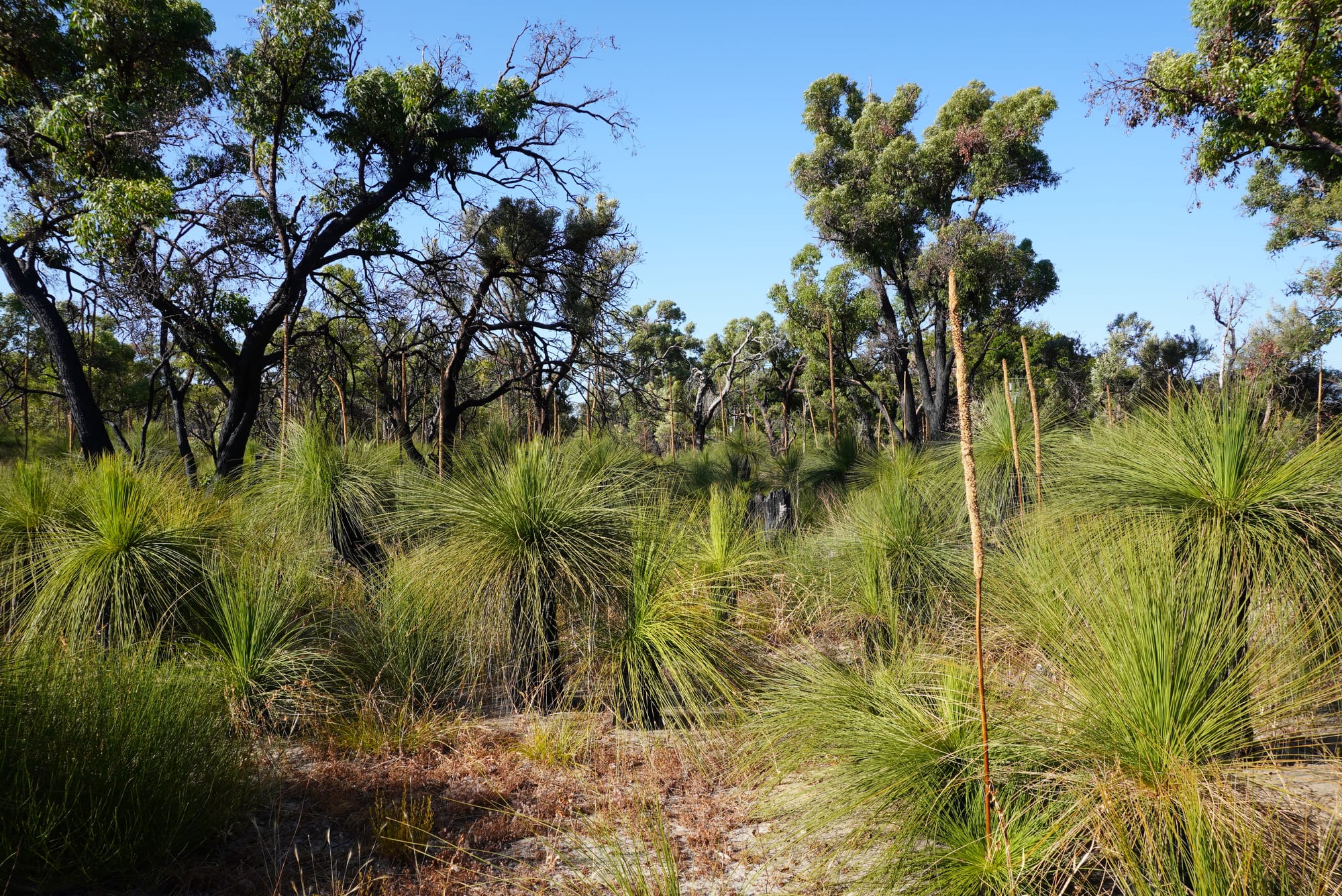
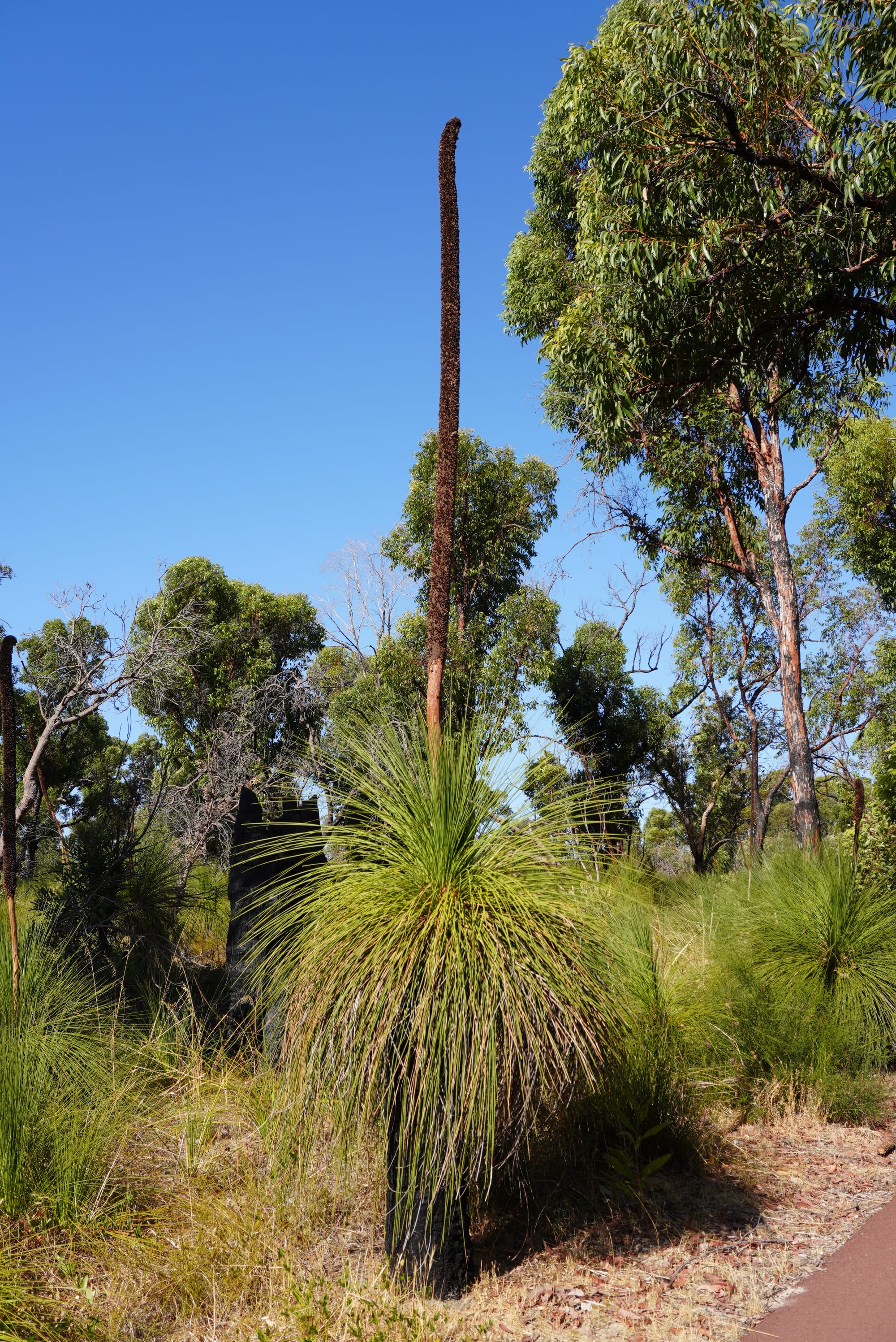
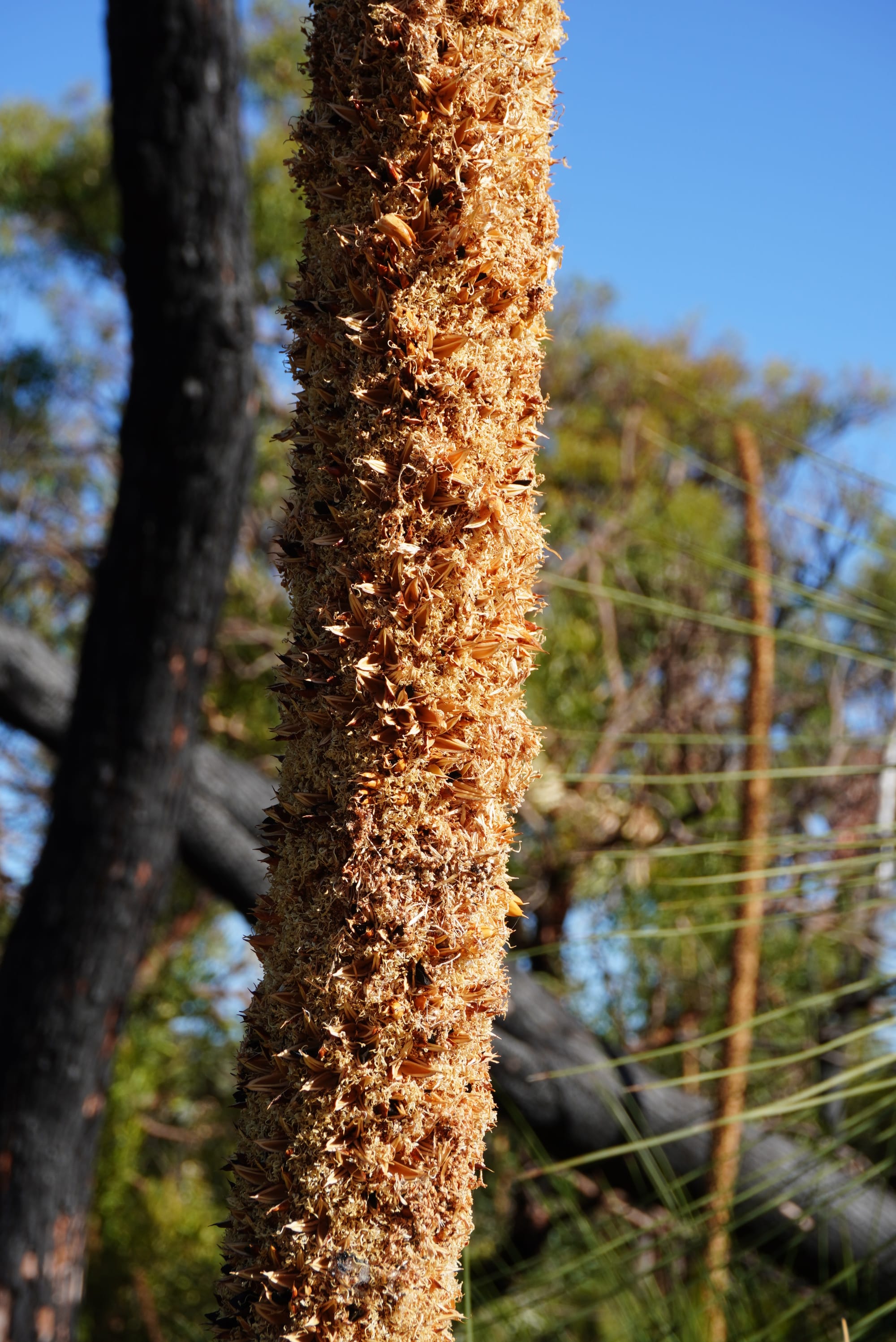
Taking photos on a nature walk can help with reference later. Remember to take a variety of shots and angles to keep it interesting.
📝 The sketcher
The sketcher carries a small journal and writing tool, ready to make marks at a moment's notice and is prepared to move on quickly.
Even if you're mostly moving there is still the possibility of taking quick sketches and notes. They might not be very detailed or look good, but would let you capture lots of information, beyond the audio-visual. In a way these are field notes - intended as a memory aid. Don't worry about it being messy, as turning it into something more pleasing comes later.
- As with the photographer it helps to note a variety of information so that what goes on the page later is of greater interest.
- Remember to use all your senses and noting metadata helps to gather relevant information at a different scale and context.
- Focus on quantity over quality - many sketches or notes will help more than detailed shading or colouring (for example don't colour in but add a colour spot instead to refer to later)
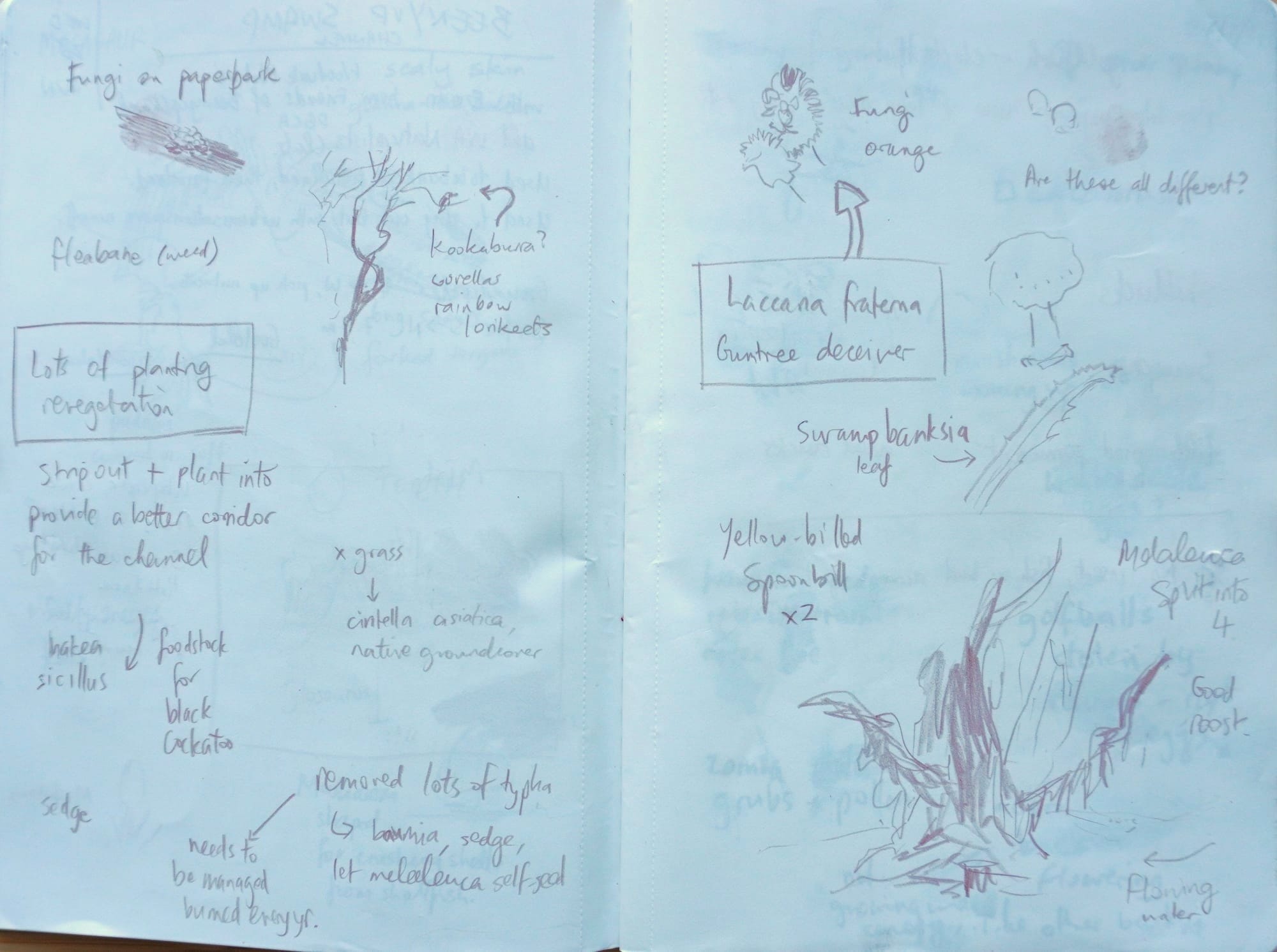
At home
As soon as you return home, make the effort to note down, transfer and organise anything from the walk so that it is easy to access once you wish to nature journal. Transfer photos and videos to the computer or specific folder, or mark those you specifically wish to use for nature journaling. Make it a habit and have a dedicated spot to look for your inspiration.
Put your journal and items where you will see it to remind you to come back and complete the page. Think about when you will dedicate the time to create your nature journal page and book it in your calendar with a reminder. The sooner the better!
Onto the page
Then, once you're ready to nature journal, gather everything you need to create your page. Next, decide on the focus or theme from the walk. This will influence the layout and story told. Here are some ideas:
🗺 Adventure map
If the route you took is your focus then make the map the main feature element on the page. You can use simple colouring and icons to mark other important features.
- Include notes or images around the edges showcasing what you observed along the way.
- Indicate north, the direction of travel and significant times of sightings or stops along the way. This is a simple, linear way of telling the story of the walk.
- One pitfall is to not leave enough space to include everything on the page. To avoid this, layout the map and other elements first before pencilling it in, moving them around and deciding on size. You can do this with cut-outs, thumbnail sketches or digitally. Planning first will save you significant time and heartache by avoiding disappointment later.
- Create a key or legend for the icons you've used on the map
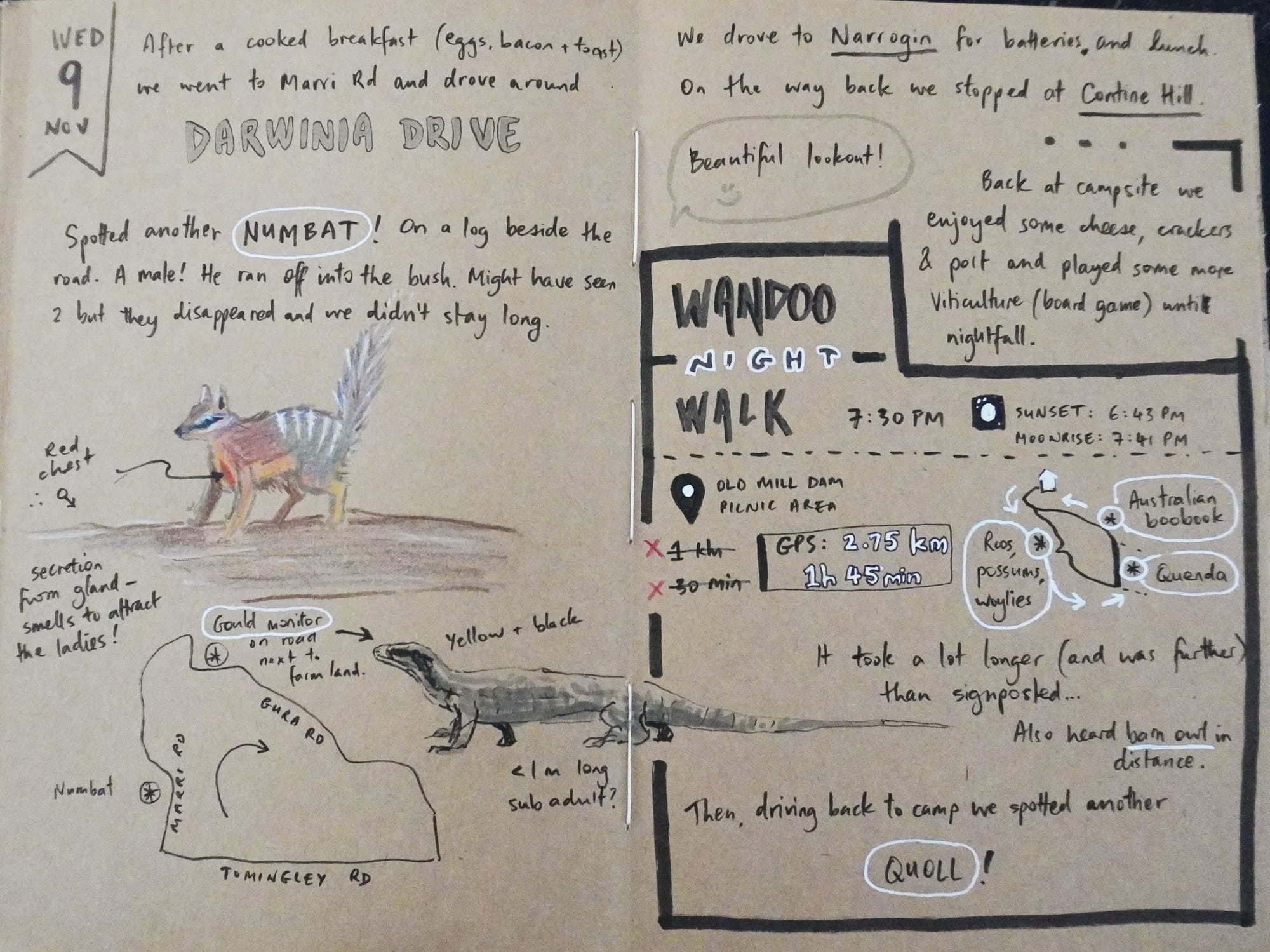
🤩 Awesome find
If you encountered something awesome (such as from an awe walk), or want to highlight one subject in particular, then make that the main feature element on the page. Annotate with notes or other smaller images around it, or keep the page minimal to really make your find stand out.
This layout could also work well for an unknown discovery, surrounded by questions and hypotheses, leaving room for later research notes.
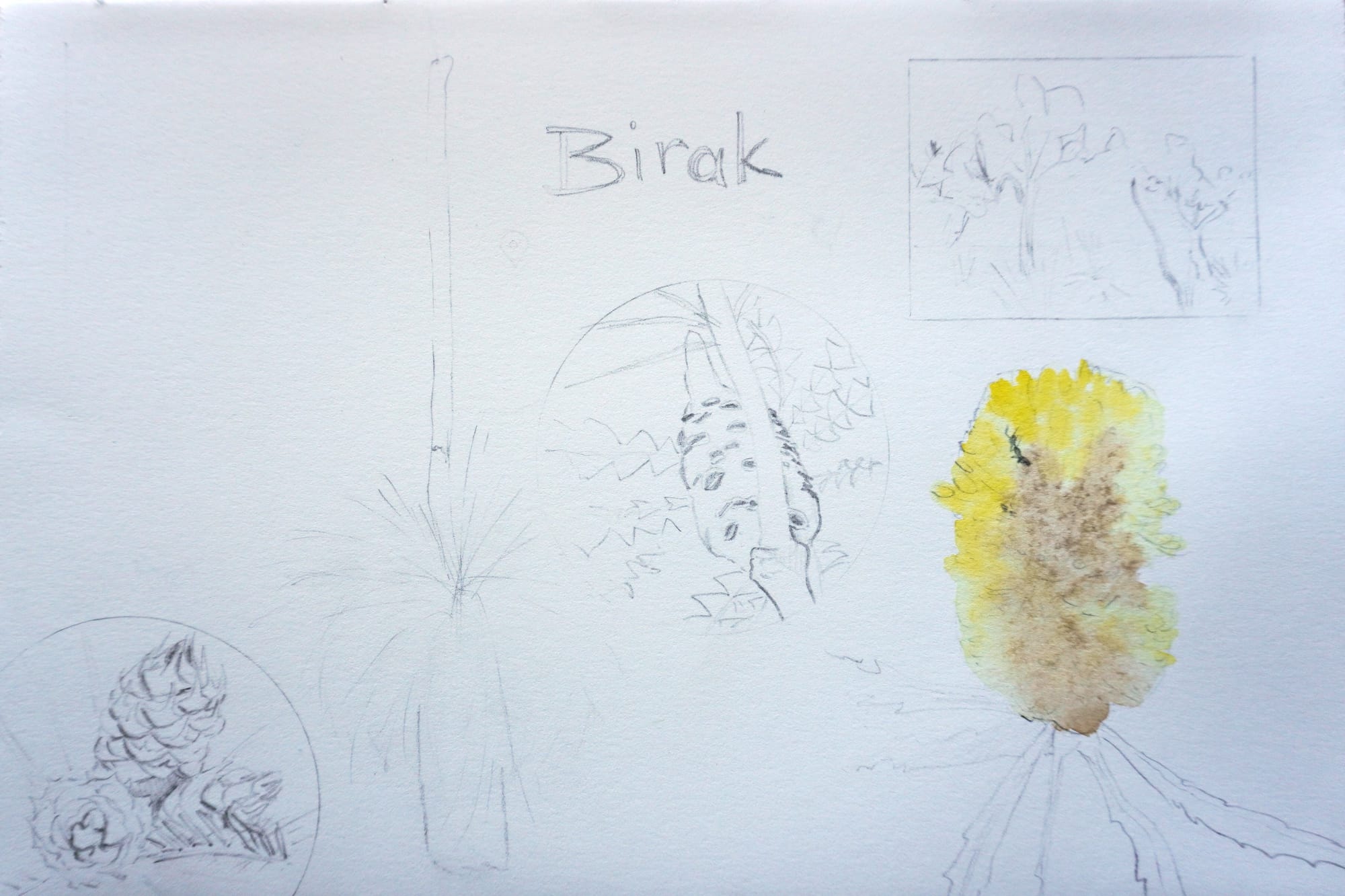
📖 Storyteller
Did a series of events happen that require a story to be told? If you'd rather write about your experience than include lots of drawing then this is a simple approach. You can journal long-hand and include a few images as supporting elements.
Or condense the experience into a poem, perhaps based on what you observed for each sense?
A comic could also work for those who prefer a graphical storytelling mode.
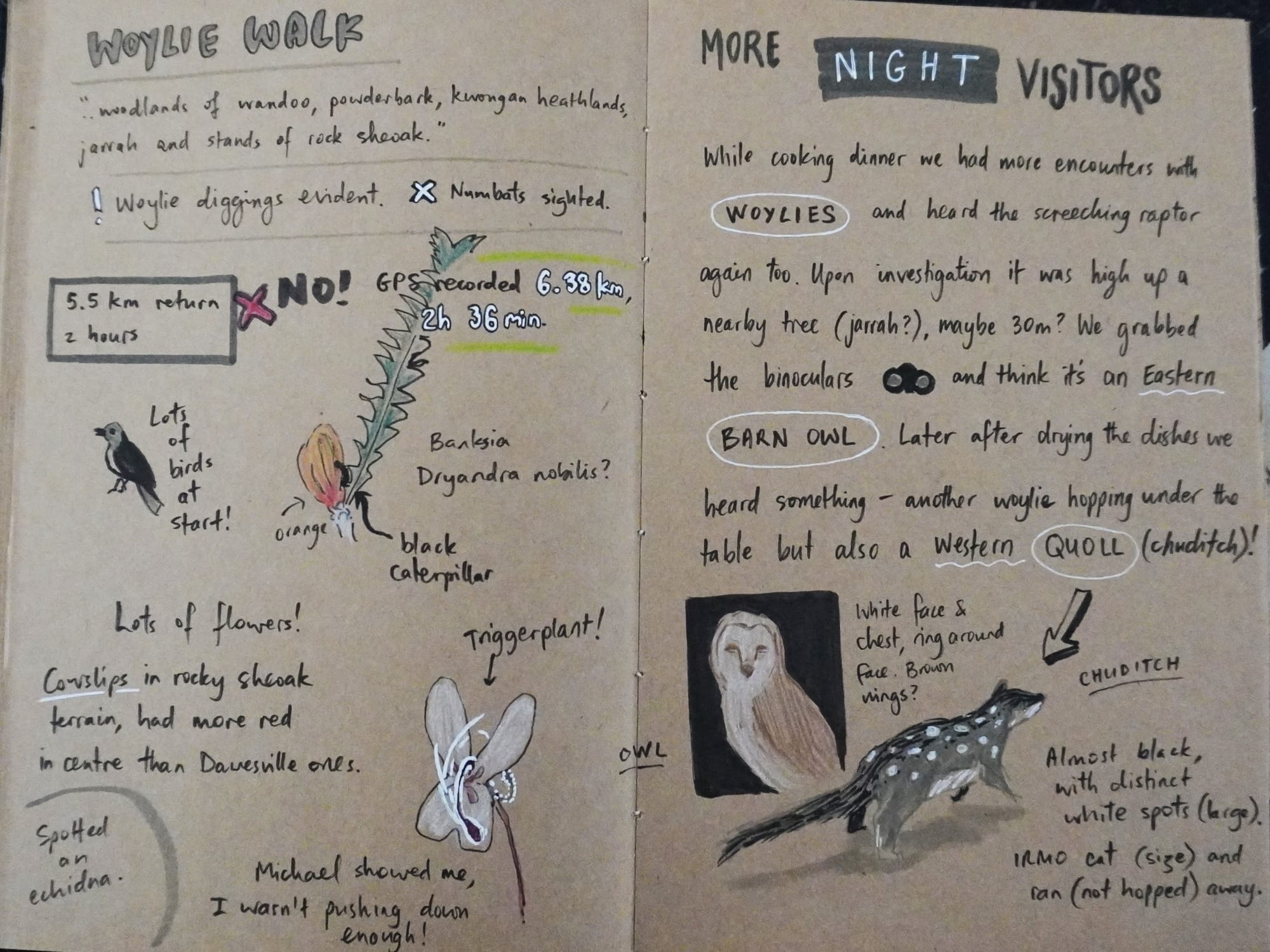
🍂Collection
If you found many items of interest or followed a theme (for example matching to a colour) then a collage or collection page might work best. There is no main focus here, rather everything has roughly equal size and importance on the page and can be distributed randomly. Play around with layout to create an aesthetic composition first for best results.
- Create boxes or small frames for each to avoid the page becoming overcrowded or busy which makes it hard for the eyes to settle.
- Draw arrows or have a line flowing from one item to the next to help with guiding the eye across the page.
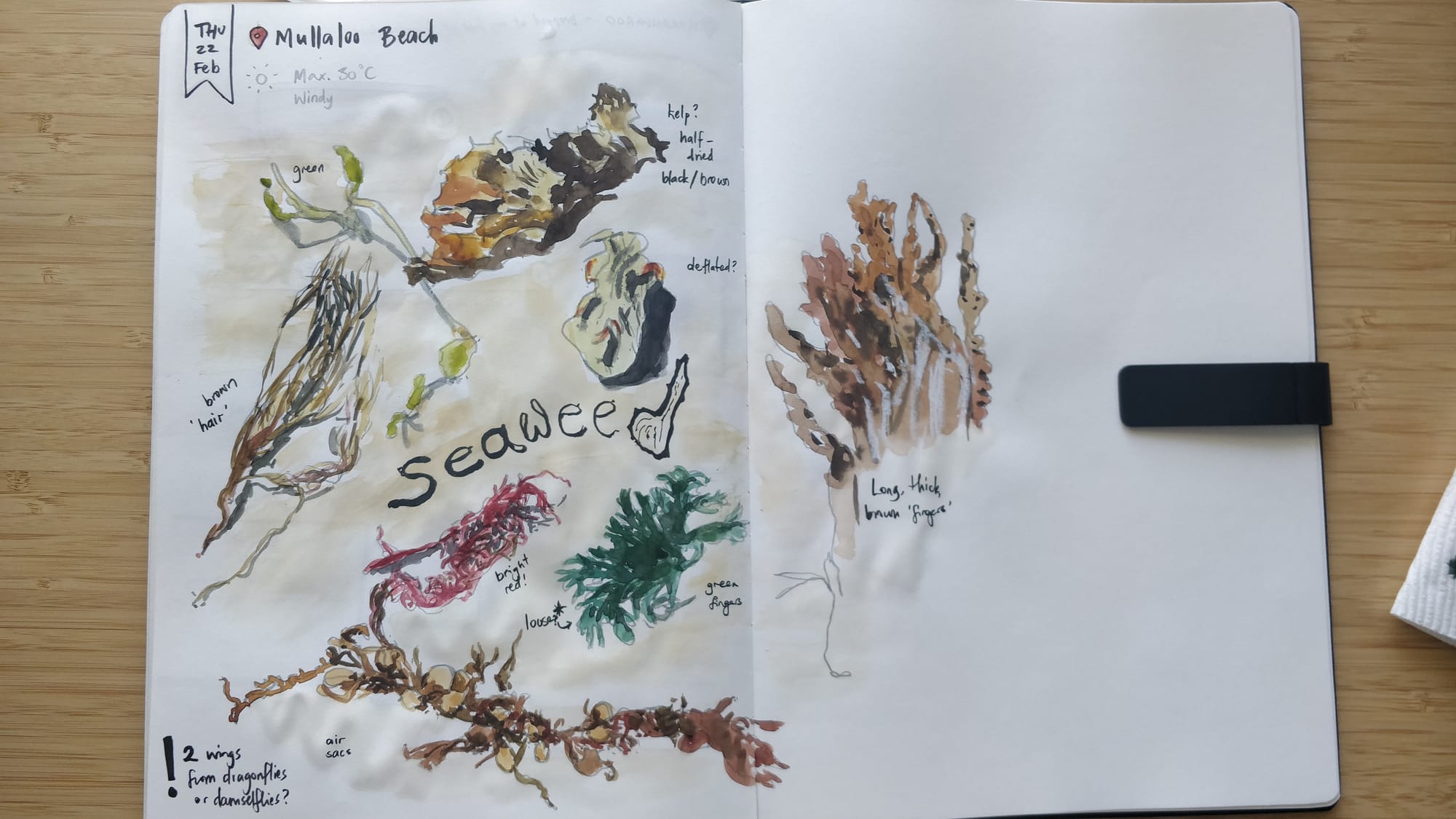
Once you've decided on what to include on your page and the layout get yourself cosy with your journal and make a start. Set aside some time to work on it in parts or just continue until you're finished. Finally, remember to share your page to celebrate its completion. 🥳
Discussion
What kind of walker do you consider yourself? What about the nature journal pages - have you created different types of layouts depending on what you discovered on your walk?
Completed a nature walk journal page? Please feel free to share a link to it in the comments so we can all be inspired. 😄
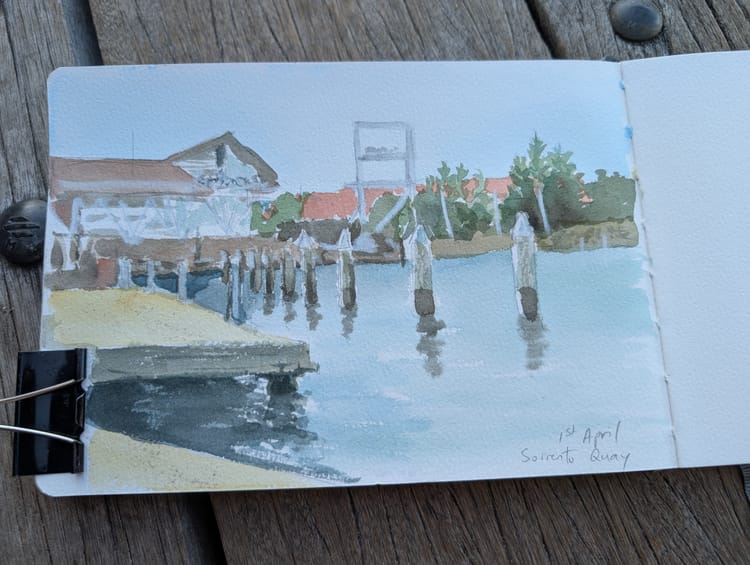
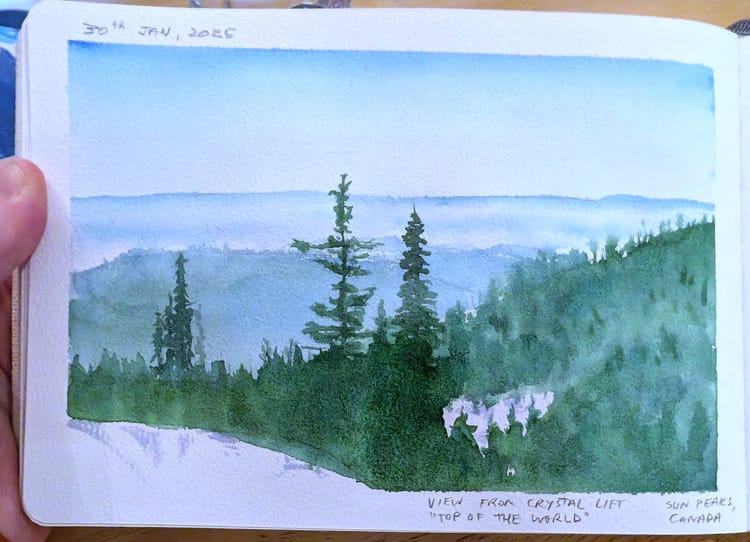
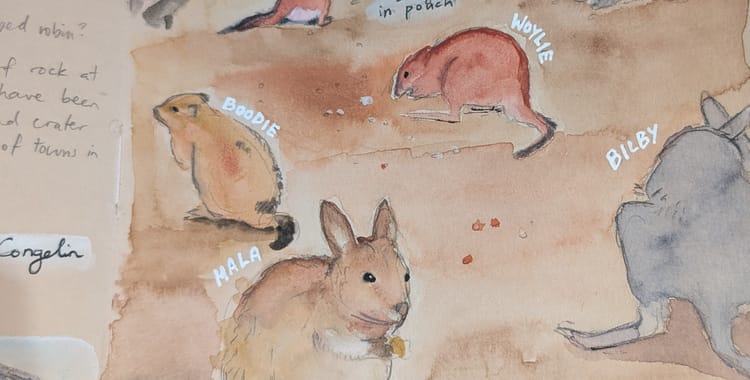
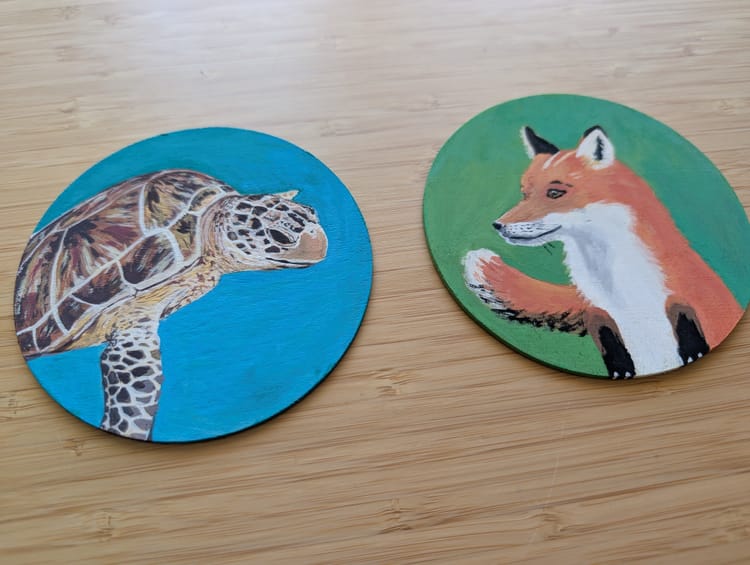
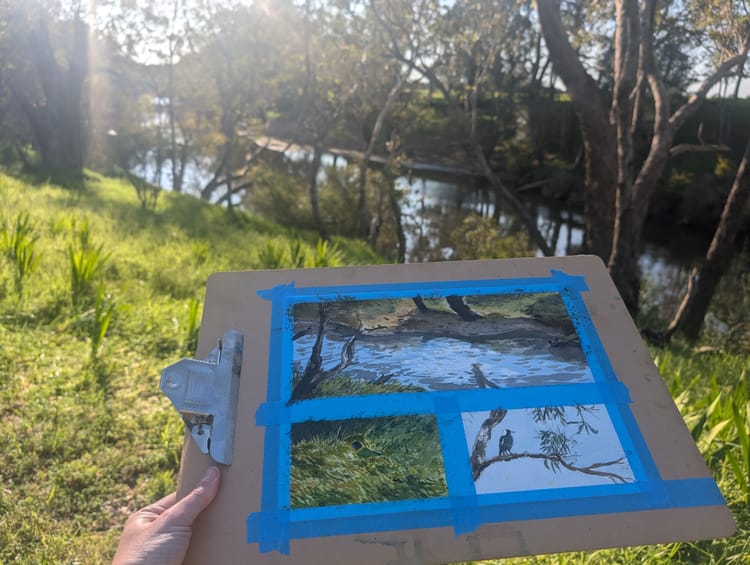
Member discussion